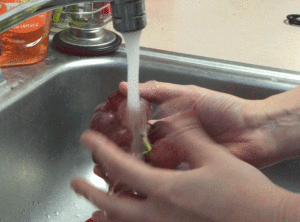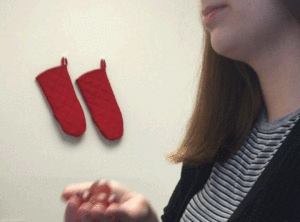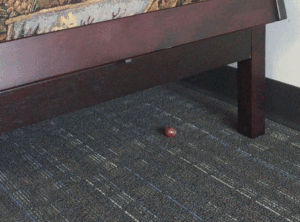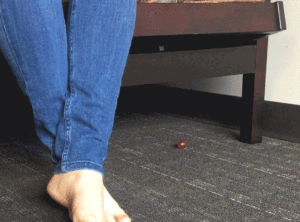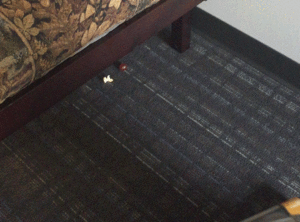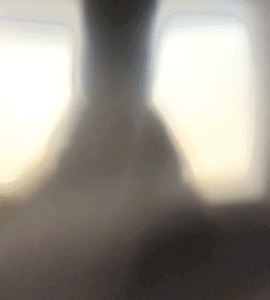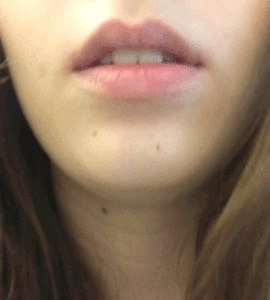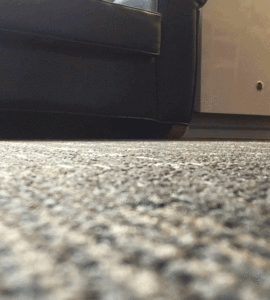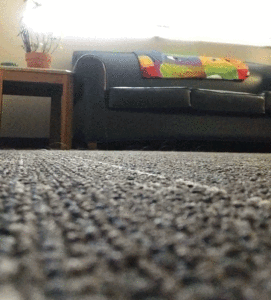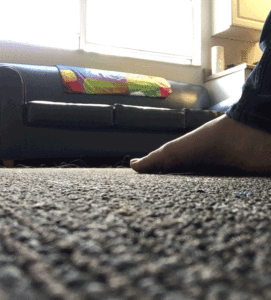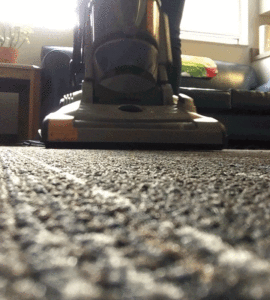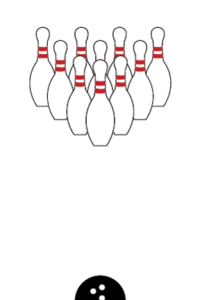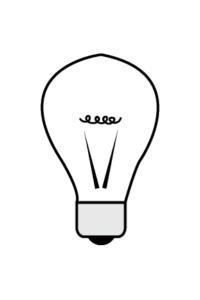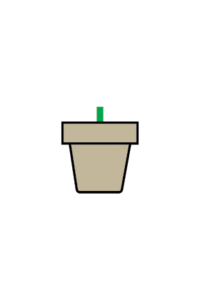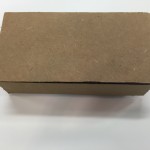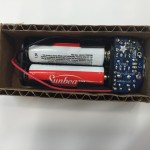GIFs
Minty Boost Kit
Augmented Reality
What problem does your app solve?
Visual learning access to those who are visual learners rather than auditory learners
What products have you seen that perform a similar task?
Movies based off of real events
How do successful apps present information to users?
They present information clearly and quickly. It should not take a lot of time or effort to get information.
How can you build on what works and make it unique?
Movies and YouTube videos are a big part of teaching and learning now so I think that these visual learning contacts could help aid even farther in that direction but with a different twist, of course.
What value does your app bring to your audience?
It will provide a better way of learning for those who struggle through the standard lecture and not taking that most classes require.
Proposal
Some students claim to be more visual learners rather than auditory learners. This creates a problem when most college classes are lectures. Now there are photos in most textbooks and some professors choose to show YouTube videos in class but are visual students getting what they need? I propose contact lenses that sync with an app that will allow the student to pick the subject they are studying and provide reenactments or moving diagrams to help demonstrate their school work. For example, if a professor was discussing a certain battle in the Civil War, the student would be able to pick that certain battle and be able to watch a reenactment of the battle right in front of them. This is also helpful for those who rather watch a movie instead of reading a book. This app and idea would have limitations though, since some subjects would be harder to have a visual aid then others.
SMild Week 6 Reading
- What information can ethnographic tools give you to improve the interactivity of an online banking website? (pp. 48-54)
I think ethnographic tools can be useful in determining who actually uses online banking and then building the website around the age and group of people who use it the most. When I think about online banking I think of my parents using it and they are 50-60 years old so the website needs to be easily understandable for someone who is not that great with technology but still keeping everything completely safe. I mean, this is a bank we are talking about.
- At what point is a design finished? What makes it a success? What is its purpose? (pp. 54-62)
I think a designed is finished when all possible outcomes for the product have been tested and fixed. It is finished when nothing else can be done to it or when the designer is truly happy with it. That may have nothing to do with the book and I understand that designing is for the user experience but I think it is just as equally important for the designer to love what they have created. Branding is what makes a product a success. Its purpose is to get people to buy and think that it is something they need in their lives.
- Identify a product family you use regularly (can be anything from technology to consumables except for coffee). How has its branding effected your use, relationship and experience with the product? (pp. 78-84)
I use my iPhone 6 regularly. Its branding makes me feel like, “look, I can afford an expensive phone.” That sounds super shallow but I feel like that is how all Apple products leave people feeling. My relationship is highly protective because it is an expensive phone and I got it for my birthday so I really careful to not drop it and always have a case on it. I went from using an iPhone 4 to an iPhone 6 so I would say, yet again, the branding itself made me feel better because I am finally with the times.
SMild Movie Response
I really agreed with Dieter Rams when he said that users act positively when things are understandable. I feel that some people over design products because they want to make something new and out there but it is not going to do well if the people buying the product do not understand how to use it. Some notes I wrote down about how the designers from the movie define design as “ways to improve the way people do things,” “are the things we are going making change?,” and “every object tells a story if you know how to read it.” I think the one things that really struck me about design is make the people move, not the product. The whole movie kind of just blew my mind since I have not really sat down and just thought about design and how powerful it can be.
SMild_Thoughts on Interactive Design Chapters 1&2
- What makes up interaction design and what are some of the industry’s challenges?
Define, Discover, Synthesize, Construct, Refine, and Reflect make up interaction design. Designers rarely start with a blank slate and they have to convey/understand what the client is asking for/wants.
- What is interaction design, how its evolving. What fields does it draw knowledge from?
Interaction Design is a creative process focused on people. It draws knowledge from fields such as engineering and marketing.
SMild – Project 1a
The product is essentially an EZ Pass for gas, or as I would like to call it, “Fill Me Up.” This product is supposed to make getting gas faster and easier so the driver does not have to get out of the car to fill up their tank. This will be achieved by having a little plastic bar in the car window, like an EZ Pass, so when the driver pulls up to the gas station a machine scans it, allowing the driver to pay that quickly. The website would help with this because each plastic bar would have an account that would be accessible on the website. Basically, when a person buys a “Fill Me Up” bar, they have to make an account that will keep track of how much they are spending, where the best gas prices are, ect.. There has also been talk about having an app that links up to the device that will make user accounts even more accessible.
Strategy:
GOAL: educate customers about the fees involved and how the earn rewards.
GOAL: the site should be fast and easy to use
GOAL: brand
In order to make money off this product there will be a small fee tagged on to the end of each use, a onetime fee with the purchase of the product. To keep the consumers happy, there will be rewards after a certain amount of money is spent on gas, whether that is a free tank of gas or percentage off.
SCOPE
The website include what “Fill Me Up” does, how to order, shopping cart, about the rewards system, what gas stations offer the product, login/account page, and debit/credit card payment options. The whole point of this product is to make getting gas fast and easy so the plan is for that to carry over to the website and possible app as well. The login/account page would consist of a user name and password. Once logged in the user would have access to where and when they got gas, the electronic receipt, and how many reward points they have. To sign up for the account the user would have to create a user name and password, put in their car information (including license plate), address, and credit/debit card number. This way the radar can detect the right car with the matching bar and bill the user straight away.
“Fill Me Up” covers the payment process at the gas station but there is still the problem of getting that gas into the car. This would be solved by going back to the old gas attendants that would fill the cars up for the driver. This could easily increase more jobs and solve that getting out of the car problem. With the company also offering jobs, applications would be another feature on the website so make it easy to apply to be a “Fill Me Up” attendant.
SMild – Week 1
- What are the goals of Apple’s website? How does Apple’s website address the needs of a user who has just purchased their first MacBook? (pp. 41-56)
I think the goal is to be user friendly just like their products. Apple is very simple and so is their website. Apple has a support page and they also have tons of tutorials and class.
- What are the functional specifications of Facebook’s wall? If you are not on Facebook what are the specs for the signup page? (pp. 72-75)
Facebook’s wall is all about being updated and the user gets notified when new “stories” are added. The book talked about frequency of updates, which with a website like Facebook, they rely on updates/new posts. Facebook also does this thing that if the user is friends with a person and that friend is friends with someone else but the original user is not, they suggest being friends. Basically, the user gets friend suggestions because they know someone who is friends with that person. I think that is what the book was referring to when they talked about prioritizing requirements.
- What are four architectural approaches to information structure? Find one example of each. (pp. 94-106)
Hierarchical – this is like a family tree. At least that is where I see them commonly used.
Matrix – any shopping website that lets the user break down the search into different categories.
Organic – I am thinking something along the lines of Pintrest just because when the user clicks on one thing it takes you to another and you end up lost for hours because Pintrest takes you anywhere. Or maybe YouTube because you could watch one video and then it suggests more and then you are somewhere in funny video abyss.
Sequential – reading an article because usually articles are read top to bottom as it is written.
- What percentage of The Huffington Post index page is navigation, and what percentage is content? What about Google, Wikipedia, and Etsy? (pp. 116-134)
The Huffington Post seems to be 100% navigation on the index page because everything takes the user to another page. I think the same thing for Google that it is 100% navigation because it is a search engine with take the user to the different pages that contain content. Wikipedia is also a type of search engine but the website actually takes the user to content within its website. On the homepage it is also 100% navigation. I would say that Etsy is probably 10% content and 90% navigation on the homepage. I say this because everything is linking to somewhere else but there are parts that do explain what the site is about and what to do.
- How does http://www.landor.com guide the readers’ eyes and focus their attention on what is important? (pp. 144-155 )
They use contrast and color and also a grid-based layout. Contrast is used to draw the user’s attention. The main focus on the page is what is already colored and all the other content is gray which provides the contrast.

